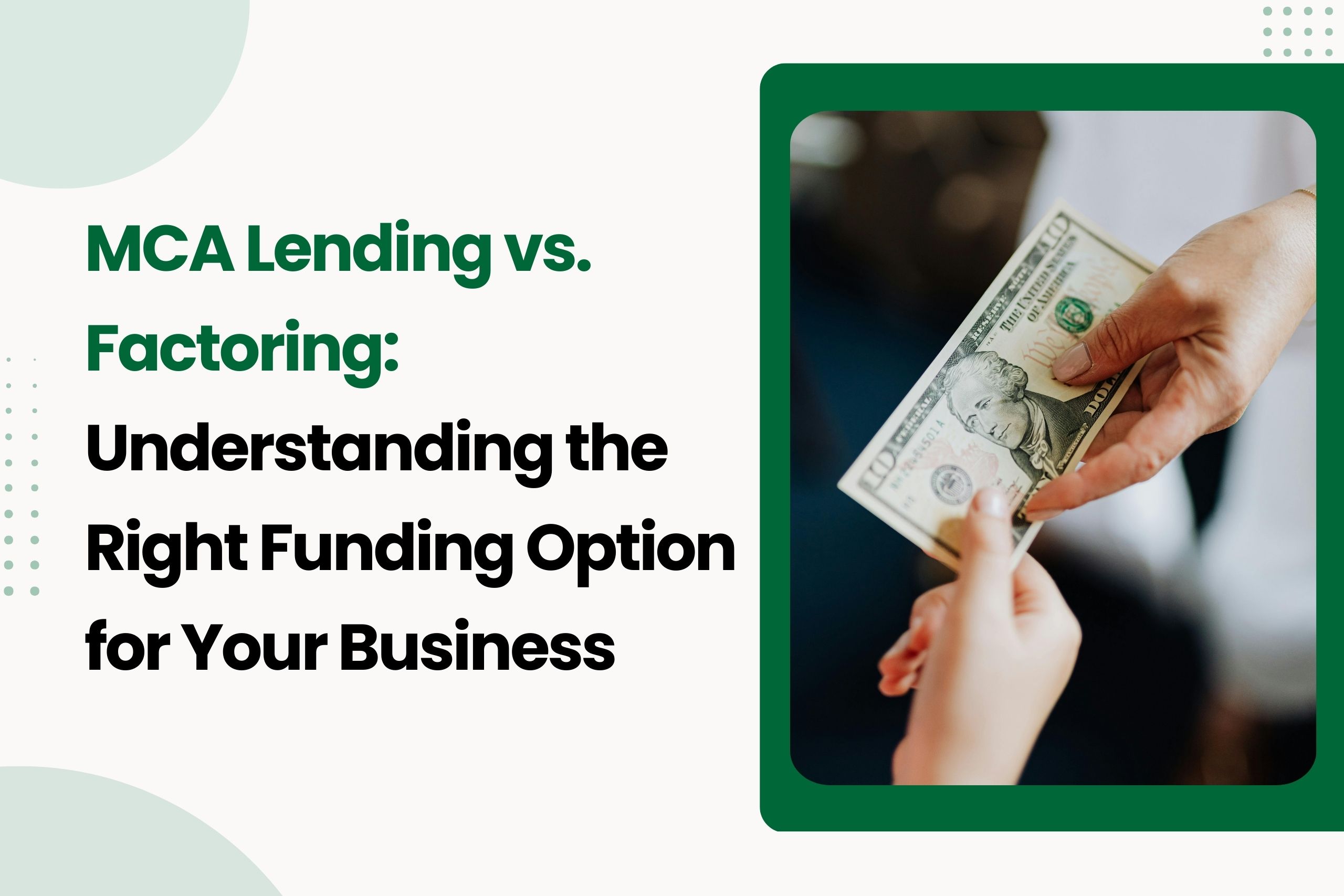When small business owners grapple with cash flow issues or need quick funding to expand, they often consider two popular options: Merchant Cash Advances (MCAs) and Factoring. While both provide speedy access to cash, they function quite differently and cater to various business models. By grasping the key differences between MCA lending and factoring, you can make a well-informed choice that aligns with your business needs.
What is MCA Lending?
Merchant Cash Advance (MCA) lending isn’t exactly a traditional loan; it’s more like buying a slice of future earnings. In this setup, a lender—often referred to as an MCA provider—hands over a lump sum of cash to a business upfront. In return, the business agrees to share a portion of its future sales, which the lender collects daily or weekly until the total amount is fully repaid.
Let’s break that down:
- Advance Amount: This is the cash you get upfront.
- Factor Rate: Instead of being an interest rate, think of it as a multiplier (typically between 1.1 and 1.5) that helps determine how much you’ll end up repaying.
- Holdback Percentage: This is a slice of your daily credit or debit card sales that’s automatically set aside to pay back the advance.
For instance, if you take out $50,000 with a factor rate of 1.3, you’ll end up repaying $65,000 through a small portion of your daily sales until the entire amount is cleared.
MCA lending is particularly beneficial for businesses that have strong and steady daily sales, such as restaurants, retail shops, auto repair services, and e-commerce ventures.
What is Factoring?
Factoring, often referred to as accounts receivable financing, is a funding method where a business sells its outstanding invoices to a factoring company at a reduced rate. In return, the factoring company provides the business with an upfront cash advance—typically between 70% and 90% of the total invoice amount—and then pays the remaining balance (after deducting fees) once the customer settles the invoice in full.
This approach works particularly well for B2B companies that issue invoices with payment terms of 30, 60, or 90 days, like manufacturers, wholesalers, or service providers.
The main elements to consider include:
- Invoice Value: This is the total amount your client owes you.
- Advance Rate: This refers to the percentage of the invoice that you get paid upfront.
- Factoring Fee: This is the charge from the factoring company, which is typically a small percentage of the invoice amount.
Unlike MCA lending, where you pay back based on your sales, with factoring, the repayment comes straight from your customer. It’s your customers who handle the financing repayment, not your business.
Why is MCA Lending a Game Changer for Small Business Owners?
MCA lending has taken off among small and mid-sized businesses, especially those that either can’t get traditional loans or don’t want to deal with the long wait for approval.
Here’s why MCA lending is so appealing:
- Speed: You can get funds deposited in as little as 24 hours. This can make a difference for businesses that are dealing with urgent expenses or time-sensitive opportunities.
- Flexible Approval: Instead of focusing solely on credit scores, approval is more about cash flow, which opens the door for businesses with poor or limited credit histories.
- No Collateral Required: Since MCAs are unsecured, you won’t have to put your assets on the line to get the funding you need.
- Simple Repayment: Payments are automatically deducted based on your daily sales. So, if your sales dip, your payments will too, making it easier to manage your cash flow.
Considerations Before Choosing MCA Lending
While MCA lending comes with a lot of perks, it’s essential to grasp the whole picture:
- Cost: The effective annual percentage rate (APR) can end up being steeper than what you’d find with traditional loans.
- Daily Repayments: If not planned out well, daily or weekly deductions can impact your cash flow.
- Short Term: MCA terms usually range from 3 to 18 months—perfect for short-term needs, but not ideal for long-term investments.
That’s why partnering with a trustworthy and transparent funding source is so important.
Why Choose Asset Commercial Credit for MCA Lending?
Don’t let cash flow issues hold you back! If your business needs quick capital and flexible repayment options without the usual obstacles of traditional lending, then MCA financing from Asset Commercial Credit might just be the ideal solution for you.




